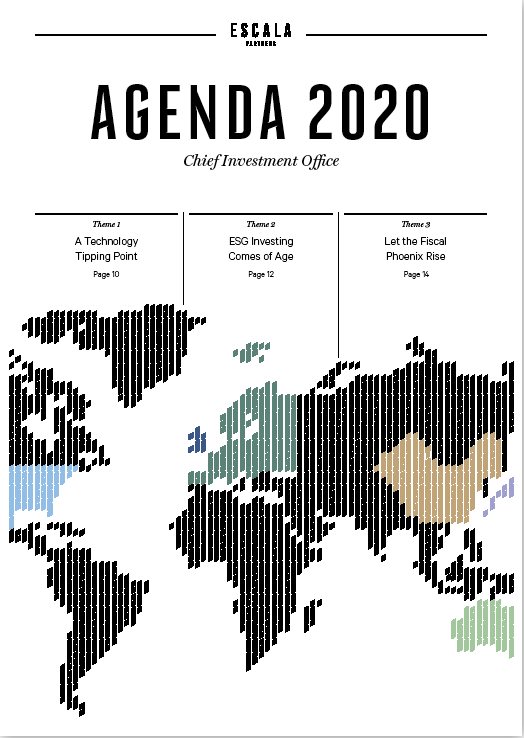-
Overview
The outlook for the Australian economy is for sluggish economic growth. Consumers are weighed down by high debt levels and weak wage growth. Further rate cuts from the Reserve Bank can be expected in 2020.
After a strong year for domestic equity returns, the outlook is for a more benign outcome in 2020. Underpinning this view is the starting point for valuations. PE expansion was the primary driver of the Australian market’s returns over the last year, largely an outcome of falling domestic and global interest rates. The forward PE of the market now stands at 17.4x, the highest level since the dot.com boom early this century.
The earnings environment remains fairly soft, a trend that has been in place since August’s disappointing reporting season. Contributing to this has been three key factors: further downgrades for the banking sector; a decline from a cyclical high in iron ore prices, which has translated into lower forecasts for the miners; and broad-based weakness for companies exposed to domestic demand.
As such, momentum is weak heading into the new year. Of the three factors noted above there is the potential for improvement from an uptick in the global economy (for the mining sector) and fiscal stimulus, which would support a broad cross section of companies. However, the headwinds for the largest sector of the market, the banks, are numerous and unlikely to subside, capping the outlook for the broader market. Companies that derive a high proportion of revenue overseas are better placed to deliver better growth outcomes, subject to the movements in the Australian dollar.
The forward yield of the ASX 200, at 4.1%, while somewhat compressed, is still attractive and particularly relevant for defensive stocks with low volatility and predictive dividends that have been adopted as bond proxies, such as infrastructure, REITs and utilities. The dovish stance adopted by the Reserve Bank of Australia and the possibility of a domestic quantitative easing program is expected to keep bond yields low, supporting these sectors and the market’s high valuation. In turn, the inclination of companies to retain high payout ratios at the expense of capital expenditure is expected to remain, underscoring the income focus of many investors in the market.
Relative to international equities, Australian equities are more expensive, offer lower prospects for growth and face a more challenged economic environment. Given this backdrop, we begin the year with a tactical underweight exposure to the Australian equity market.
Monthly Change in Forward EPS

Source: Bloomberg
The positive earnings lift from iron ore dissipated into the second half, while downgrades to the banks also pulled the market lower.
Composition of Returns (2019)

Source: Bloomberg
PE expansion was the primary driver of returns in 2019, particularly among the higher growth sectors of the market.
Sectors P/E and EPS Growth

Source: Bloomberg
A large part of the market is forecast to deliver modest earnings growth in the year ahead.
Bank Loans as a share of Deposits (%)

Source: Bloomberg
Bank loans as a share of deposits at the lowest since 2013 reflecting weak credit growth and macroprudential tightening by the RBA and APRA.








